1. Understanding Acidic Foods
What Are Acidic Foods?
Acidic foods are those that have a low pH level, typically under 7, indicating higher acidity. These foods can either be naturally acidic or become acidic during digestion. Common examples include citrus fruits, vinegar, and carbonated beverages. While some acidic foods are healthy in moderation, excessive consumption can lead to health concerns. Identifying acidic foods to avoid is crucial for maintaining balance in your diet.
How Acidic Foods Affect the Body
When consumed in excess, acidic foods can disrupt the body’s natural pH balance, which leans slightly alkaline. This imbalance may contribute to issues such as acid reflux, weakened tooth enamel, and stomach irritation. Regularly eating acidic foods without moderation can place stress on your digestive system and overall health.
Acidity vs. Alkalinity: The Basics
The pH scale ranges from 0 (highly acidic) to 14 (highly alkaline), with 7 being neutral. The body works hard to regulate its pH, especially in the blood, but diet plays a role in supporting this balance. Understanding the relationship between acidic and alkaline foods can help you make informed choices about which acidic foods to avoid to protect your health over the long term.
Affiliate Disclaimer
This blog post may include links to affiliate sites. If you click on an affiliate link and make a purchase, we may earn a small commission or receive other compensation at no extra cost to you. Please note that many of the links on our site are affiliate links. Our use of these links does not impact the products, services, or websites we recommend to you. This disclaimer covers all forms of communication with you, including our website, email, phone, social media, products, and other platforms.
Amazon Affiliate Disclaimer
We participate in the Amazon Services LLC Associates Program, an affiliate marketing program that allows us to earn fees by linking to Amazon.com and its affiliated sites. If you click on an Amazon affiliate link on our site and make a purchase, we may receive a small commission at no additional cost to you.
2. Why Should You Avoid Acidic Foods?
Impact on Digestive Health
One of the primary reasons to limit acidic foods is their effect on the digestive system. Foods with high acidity can irritate the stomach lining, leading to discomfort, bloating, or gastritis. For individuals with acid reflux or GERD, consuming acidic foods often triggers symptoms like heartburn and regurgitation. Recognizing acidic foods to avoid is key to managing these conditions and improving overall digestive comfort.
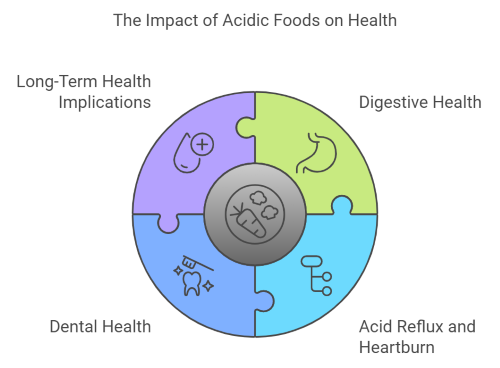
Connection to Acid Reflux and Heartburn
Acid reflux occurs when stomach acid flows back into the esophagus, causing a burning sensation. Highly acidic foods, such as tomatoes, citrus fruits, and vinegar, are known to aggravate this condition. By reducing acidic foods to avoid in your diet, you can minimize the frequency and severity of reflux episodes.
Dental Health Concerns with Acidic Foods
Acidic foods can weaken tooth enamel over time, making teeth more susceptible to decay and sensitivity. Regularly consuming items like sodas, citrus, or even certain salad dressings can contribute to dental erosion. Maintaining oral health involves not only good hygiene but also reducing dietary exposure to acids.
Other Long-Term Health Implications
An acidic diet can lead to imbalances that affect bone health, kidney function, and overall vitality. Avoiding excessively acidic foods supports long-term wellness.
3. Common Acidic Foods to Avoid
Citrus Fruits and Their Juices
Citrus fruits like oranges, lemons, and grapefruits are highly acidic and can trigger acid reflux or irritate sensitive stomachs. While they are rich in vitamin C, their acidity can make them problematic for those with digestive issues. Reducing these acidic foods to avoid can help manage symptoms like heartburn.
Carbonated Drinks and Sodas
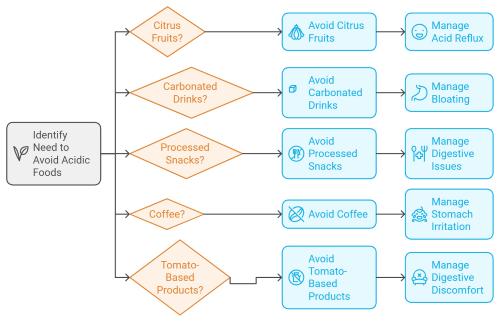
Carbonated beverages are not only acidic but also contribute to bloating and discomfort due to their fizzy nature. Sodas, in particular, contain phosphoric acid, which can erode tooth enamel and lead to other health concerns. Opting for water or herbal teas is a better choice to avoid the impact of these acidic foods.
Processed and Packaged Snacks
Many processed snacks, such as chips and crackers, are made with acidic additives or preservatives. These can disrupt pH balance and aggravate digestive issues. Checking ingredient labels can help you steer clear of these hidden acidic foods to avoid.
Coffee and Other Caffeinated Beverages
Coffee is naturally acidic and can irritate the stomach lining, especially when consumed in excess. If you’re sensitive to acidity, consider switching to lower-acid alternatives like herbal teas.
Tomato-Based Products
Tomatoes and products like pasta sauce and ketchup are common culprits of dietary acidity. Limiting these acidic foods can reduce acid reflux and promote digestive health.
4. Identifying Hidden Sources of Acidic Foods
Reading Nutrition Labels for Acidity Indicators
Many acidic foods are easy to identify, but others may be less obvious. Processed and packaged foods often contain additives like citric acid or phosphoric acid, which contribute to their acidity. These ingredients are commonly found in flavored drinks, snacks, and ready-made meals. Checking labels for these compounds is a practical way to identify acidic foods to avoid, even in items that may not taste overly acidic.
Restaurant Meals and Acidic Additives
Dining out can make it challenging to control your intake of acidic foods. Many dishes are prepared with acidic ingredients like vinegar-based dressings, tomato sauces, or citrus marinades. Even some seemingly healthy options, such as salads, might come with dressings high in acidity. Asking about preparation methods or requesting alternatives can help you limit exposure to acidic foods.
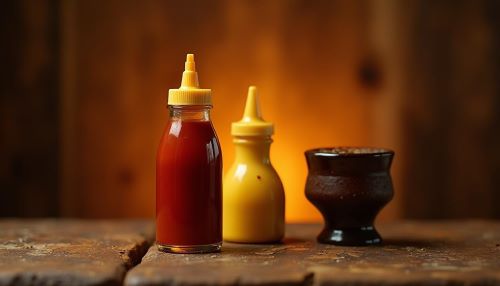
Sneaky Acidity in Condiments and Sauces
Everyday condiments like ketchup, mustard, soy sauce, and hot sauce often contain acidic elements. While they can enhance flavor, frequent use can contribute to health issues over time. Opting for low-acid or homemade alternatives allows you to enjoy these flavors without compromising your dietary balance. Recognizing hidden acidic foods helps in making informed choices for better health.
5. Alternatives to Acidic Foods
Low-Acid Fruits and Vegetables
If you’re looking to reduce acidic foods, there are plenty of low-acid fruits and vegetables to enjoy. Bananas, melons, and avocados are excellent substitutes for citrus fruits, providing nutrients without irritating the stomach. Vegetables like broccoli, spinach, and cucumbers are also low-acid and great for maintaining a balanced diet. These choices can help you replace acidic foods to avoid with gentler options.
Herbal Teas as a Substitute for Coffee
Coffee, while a beloved beverage, is highly acidic and can exacerbate issues like acid reflux. Herbal teas, such as chamomile, ginger, or peppermint, provide soothing and flavorful alternatives. These teas not only replace the acidity of coffee but also offer additional health benefits, like reducing inflammation and aiding digestion.
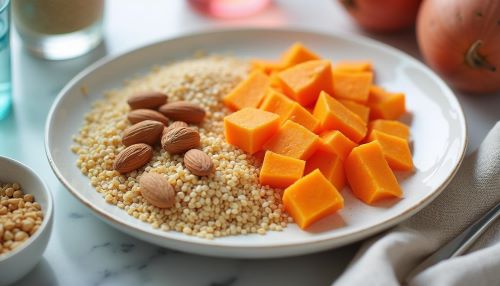
Alkaline-Forming Whole Foods
Incorporating alkaline-forming foods into your meals helps counteract the effects of dietary acidity. Foods like quinoa, almonds, and sweet potatoes can balance pH levels while offering vital nutrients. Instead of tomato-based sauces, consider creamy avocado spreads or roasted red pepper purees. Transitioning to these alternatives makes it easier to reduce acidic foods to avoid while still enjoying diverse and satisfying meals.
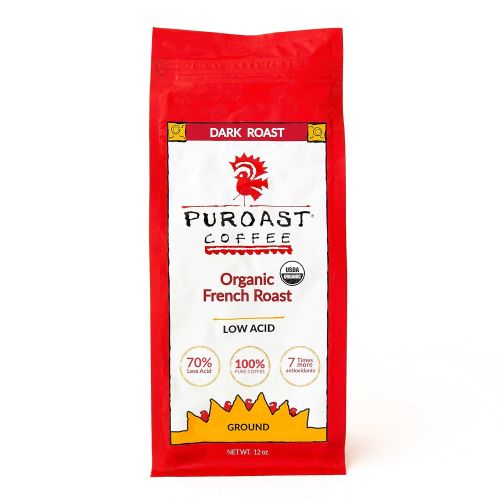
6. Tips for Balancing Your Diet
Incorporating Alkaline Foods
Balancing acidity in your diet starts with incorporating more alkaline foods. Green leafy vegetables, nuts, seeds, and whole grains can help neutralize the effects of acidic foods. These options not only support pH balance but also provide essential nutrients like vitamins and minerals. Adding alkaline choices to your meals reduces the impact of acidic foods to avoid while promoting overall health.
Limiting Acidic Foods Without Restriction
You don’t need to eliminate all acidic foods from your diet; moderation is key. Small portions of citrus fruits or tomatoes can still be enjoyed without overloading your system with acidity. Focus on creating a balanced plate, where alkaline foods like vegetables or quinoa offset the acidity from occasional indulgences. Understanding your tolerance levels can help you manage acidic foods to avoid more effectively.
The Role of Hydration in Neutralizing Acidity
Staying hydrated is an essential strategy for balancing dietary acidity. Drinking water, especially alkaline or mineral water, can help dilute stomach acid and support digestion. Avoid sugary or carbonated beverages, which may contribute to acidity. Proper hydration, combined with mindful eating, ensures your body maintains a stable pH and reduces the risks associated with acidic foods.
7. Conclusion
Summing Up the Importance of Avoiding Acidic Foods
Acidic foods play a significant role in how our bodies maintain balance, but overconsumption can lead to health challenges such as digestive discomfort, acid reflux, and weakened tooth enamel. Identifying and reducing acidic foods to avoid is an effective way to support better digestion, oral health, and overall well-being. Small changes, such as swapping out high-acid foods for alkaline alternatives, can make a big difference.
Small Changes for Big Health Benefits
You don’t need a complete overhaul of your diet to see improvements. Start by limiting highly acidic foods like sodas, tomato-based products, and citrus fruits while incorporating alkaline foods such as leafy greens and bananas. Staying mindful of your choices allows you to enjoy a varied and satisfying diet without compromising your health. By prioritizing acidic foods to avoid, you take a proactive step toward a balanced, healthy lifestyle.
FAQs
- What are acidic foods?
Acidic foods are those with a low pH, such as citrus fruits, soda, and tomato-based products, which can disrupt the body’s pH balance if consumed in excess. - Why should I avoid acidic foods?
Overconsumption of acidic foods can lead to issues like acid reflux, tooth enamel erosion, and digestive discomfort. - What are some common acidic foods to avoid?
Examples include citrus fruits, coffee, carbonated drinks, processed snacks, and vinegar-based dressings. - Are all acidic foods unhealthy?
Not necessarily; many acidic foods, like oranges and tomatoes, offer nutrients. Moderation is key to minimizing negative effects. - What are good alternatives to acidic foods?
Low-acid options include bananas, melons, spinach, quinoa, and herbal teas. - Can drinking water help balance acidity?
Yes, staying hydrated, especially with alkaline water, can help neutralize dietary acidity. - How do I identify hidden acidic foods?
Check food labels for ingredients like citric acid or phosphoric acid, and be cautious with processed and packaged products.


